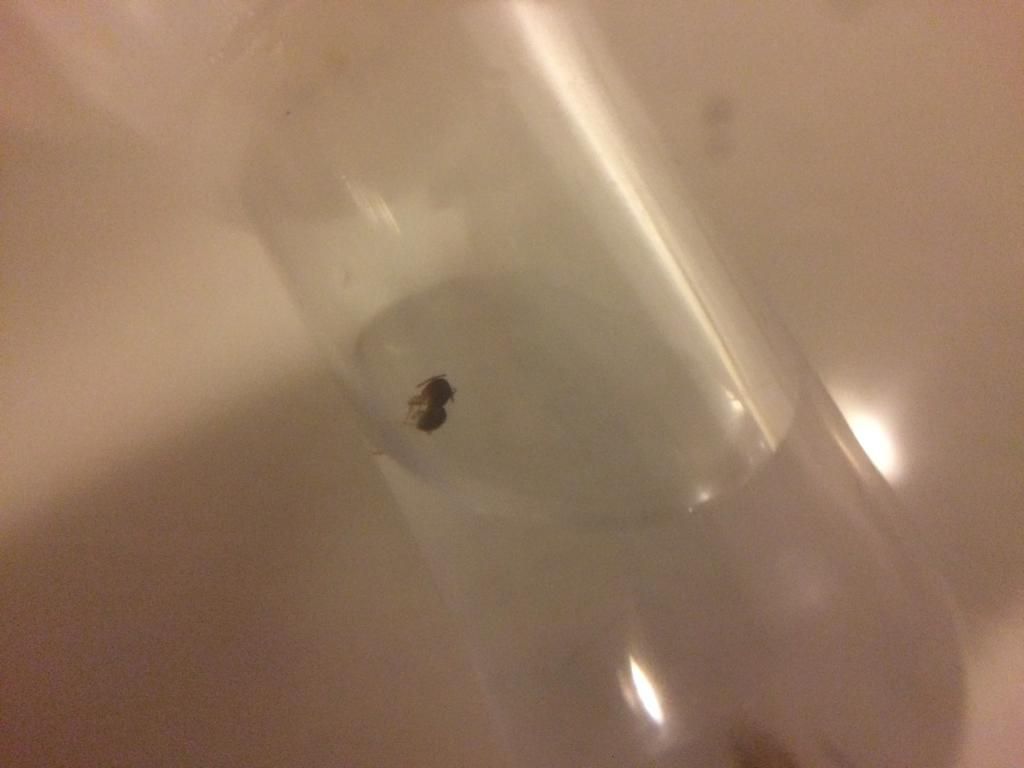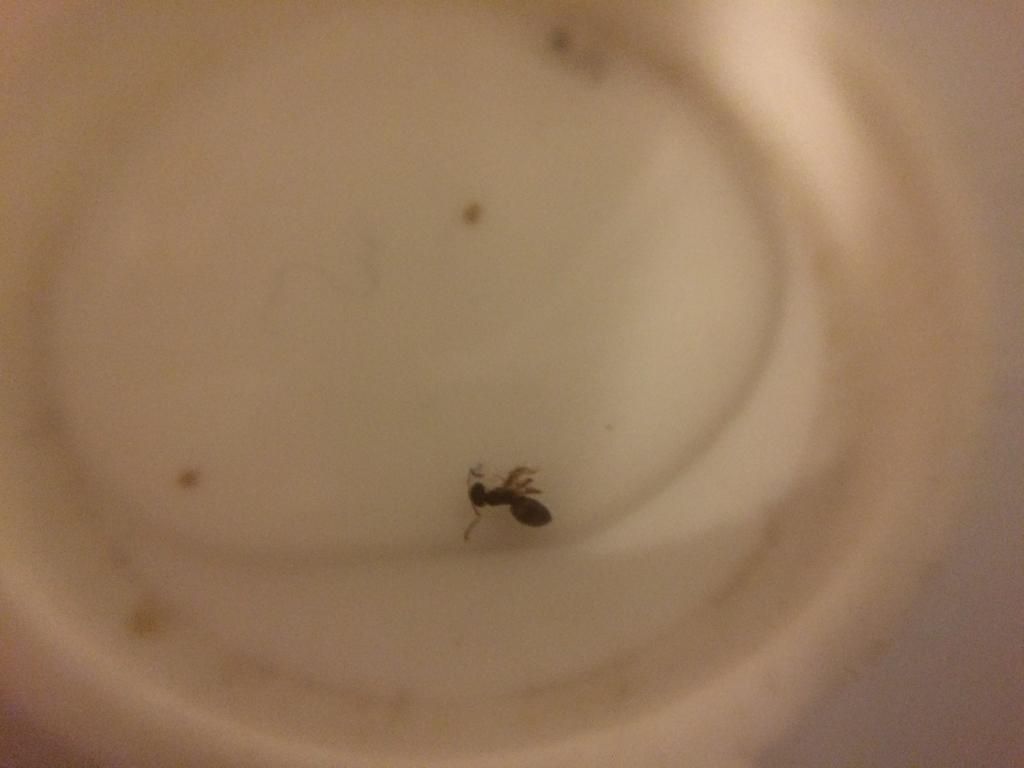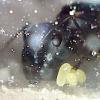I have been made aware of recent grumblings over the
byFormica Liquid Feeders clogging over time. This is a known product feature, and not a flaw.
The above illustration shows what happens when solutions containing protein are added to any liquid feeder.
My design philosophy for liquid feeders is that a liquid feeder should not be a tool to allow one to neglect their ants.
People who have dogs, cats, hamsters, and lizards must feed and care for their pets daily. There is no legitimate reason why one should expect ant care to take any less effort. Therefore, the liquid feeder I designed is more of a "replenishing puddle," which will naturally evaporate, leaving the reserved liquid more thick over time, wherein it must be frequently replaced. The smallest Lightyear liquid feeders allow for the addition of 10-20 drops of liquid—so there is little waste when replenishing liquid food for even the smallest colony on a daily basis.
All liquid feeders work best with either distilled water, or a sugar solution that also has preservatives to protect the quality, such as
Formula Green 600 or some "hummingbird nectars."
It is foolhardy to claim that such a feeder exists so as to allow one to feed a liquid solution containing protein for days or weeks, unattended. All proteins will spoil in the nutrient-rich broth of
any liquid feeder, and so I include in the
written instruction booklets, guidelines for use:
Liquid Food - - - - - - - - Useful Life
Green 600 - - - - - - - - - - Until viscous (thick)
Distilled Water - - - - - - - Until depleted
Sugar or honey water - - - Until viscous or milky (due to bacteria growth)
Aqua 300 - - - - - - - - - - - 24 hours
"Complete Ant Juice" - - - 24 hours
Blue 100 - - - - - - - - - - - -12 hours
[Jan 15, 2015] About Blue 100 and 155 Solubility:
I have been examining the properties of the Blue 100 series of Ant diets for use in the LIGHTYEAR Liquid Feeders.
Previously, I mentioned that Blue 100 & 155 form a sediment of undissolved protein in liquid feeders.
I have had success incorporating these proteins with water by blending them at high speeds (using a food processor or juice blender) with the requisite amount of warm water (35-45 ml) for use in the liquid feeders.
Blue 155 is recommended for this application, as it may be cooked fully without setting into a gel.
If ants will not eat Blue 100 series diets in liquid form, the Blue foods may be mixed with Formula Green 600, or, if Green 600 is unavailable, a small amount of white sugar (do not use honey, brown sugar, or artificial sugars).
If my ants do not want liquid Blue 100 for some reason, I add 20-25 drops of diluted Green 600 (prepared with up to 50 ml hot water), and then 5-10 drops of Blue 100 to the liquid feeder. The proportions may be modified, as ants will respond differently to different ratios, depending on a number of environmental and biological factors and conditions.
Since I understand that not everyone has access to equipment to blend the liquid, I will continue to examine alternative methods of incorporating the proteins into the water to form a suspension that may be made at home without additional equipment.

























